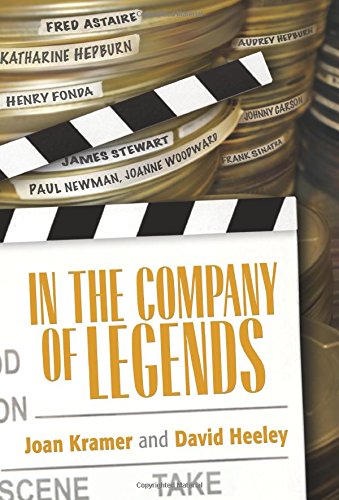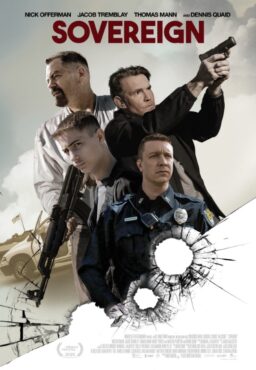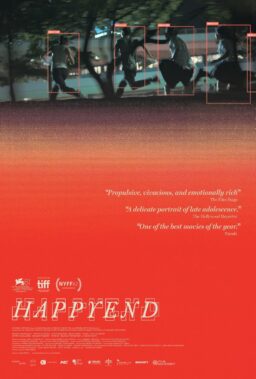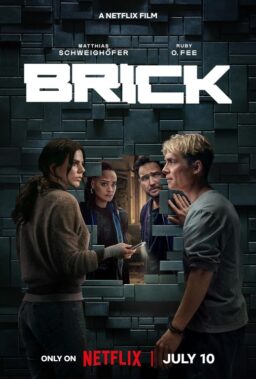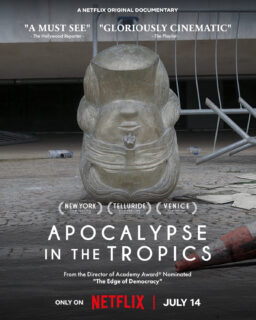As a
sideline to my regular gig as a film critic, I have done my fair share of
interviews with actors and filmmakers over the years, either in print or in
on-stage Q&A’s and like anyone who does that sort of thing on a
semi-regular basis, I have a number of anecdotes that I have acquired over the
years that I am perfectly willing to share at the drop of a hat—going
completely fanboy talking to legends like Roger Corman, Dick Miller and Russ
Meyer, the incredibly awkward 10 minutes or so I spent with a
non-English-speaking filmmaker while waiting for his interpreter to show up,
the insane number of hoops I was forced to jump through in order to speak to
Lara Flynn Boyle, and so on. Joan Kramer and David Heeley have done an incredible number
of interviews with some of the most notable names in screen history and have
acquired plenty of behind-the-scenes anecdotes along the way and in “In The Company Of Legends” (Beaufort Books. $24.95), they share many of them
in print for the first time.
While
their names may not be immediately familiar to even the most ardent of film
buffs, the work that Kramer and Heeley have done over the years certainly is.
Having met when they were both working for New York’s public television station
WNET, they would eventually partner up and, between 1980-2005, would go on to
create a number of acclaimed documentary programs on some of the most famous
names in Hollywood history—their subjects would include Fred Astaire,
Katharine Hepburn, Paul Newman & Joanne Woodward, Spencer Tracy, James
Stewart, Henry Fonda, Universal Studios, Columbia Pictures and the Group
Theatre. This may not sound like a big deal today, when elaborate Blu-Ray features
of this type are common, but when they were starting out, there was not much
interest in this kind of programming from the potential subjects (who could
scuttle the entire thing if they disagreed with how things were going), the
studios (who could withhold the all-important film clips that they controlled)
and financiers (who were needed to foot the bills). Nevertheless, they
persevered and their documentaries—which would be seen on such networks as
WNET, TCM and Starz—would allow them to collect rave reviews, awards and a lot
of stories along the way.
The
anecdotes cover the gamut from legal minutiae (such as the occasional struggles
to convince people to allow key film
clips) to pure gossip (including Frank Sinatra turning up late and drunk for an
appearance at a tribute to Spencer Tracy and Katherine Hepburn’s appalled
reaction to a Michael Jackson concert that she attended) and some of them are
undeniably fascinating—the discoveries of priceless home movies and
behind-the-scenes footage found in closets, attics and even in a barn out back; Olivia de Haviland talking about her love for longtime co-star Errol Flynn; Hepburn at the MGM studios pointing out the very table where she and Greta
Garbo tried in vain to convince Louis B. Mayer to produce a film version of
Eugene O’Neill’s “Mourning Becomes Electra” as a vehicle for them.
The occasional rough spots that Kramer and Heeley hit also make for some
entertaining moments in the narrative—an attempt to do a program with Bette
Davis goes weirdly awry and Harvey Keitel turns up to be interviewed for a film
on John Garfield in such a surly mood that exactly one comment could be used in
the final product.
The
trouble is the truly memorable anecdotes are few and far between here and after
a while, the background stories for the projects start to blend into each
other, especially in a book running nearly 400 pages. With the rare exception
of the likes of Davis and Keitel, virtually everyone winds up being as friendly
and approachable as can be, and when a hiccup does occur, it is usually dealt
with quickly and with little fuss. At worst, the stars they encounter sometimes
take a little while to warm up but not only do they almost always do, many of
them wind up becoming friends of the filmmakers and contributors to later
projects. Outside of the chapter regarding the film about the Group Theatre, a
passion project for Joanne Woodward, there is precious little talk about the
actual nuts and bolts of putting the films together. The biggest flaw, however,
is an admittedly unavoidable one—we hear about the wonderful and revelatory
interviews that the stars give but, of course, none of that material is
included in the book.
Whether
you will enjoy “In The Company of Legends” will depend in large part
on what exactly it is you are hoping to get from it. If all you want is a bunch
of stories along the lines of Katherine Hepburn dealing with the sight of a
raspberry stain on her sofa or James Stewart dealing with a oddball who turns
up at his house with the dream of meeting his idol (hint: it isn’t Stewart),
then it should fit the bill—it is breezily written and contains a number of
rare behind-the-scenes photos of many of the participants (and even sketches by
Stewart of his most beloved co-star, Harvey) as well. However, if you are in
the mood for a more penetrating look at the lives and careers of these icons
that helps to explain exactly what it was that made them so fascinating and
unique, you are advised to look elsewhere—the actual films of Kramer and
Heeley being an excellent first stop.

